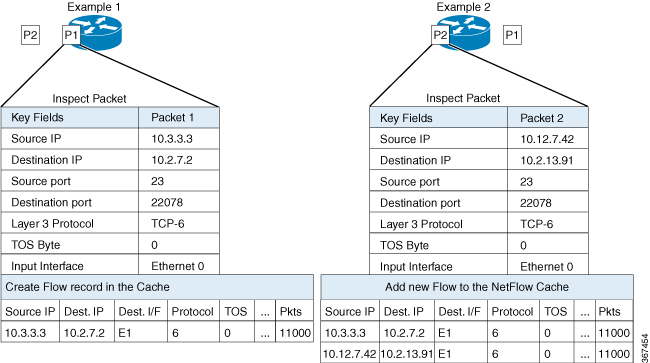Prerequisites for Flexible NetFlow
-
You are familiar with the Flexible NetFlow key fields as they are defined in the following commands: -
match flow
- match interface
- match {ipv4 | ipv6 }
- match routing
- match transpor t
-
-
You are familiar with the Flexible NetFlow nonkey fields as they are defined in the following commands: - collect counter
- collect flow
- collect interface
- collect {ipv4 | ipv6 }
- collect routing
- collect timestamp sys-uptime
- collect transport
-
The networking device must be running a Cisco release that supports Flexible NetFlow.
IPv4 Traffic
-
The networking device must be configured for IPv4 routing.
-
One of the following must be enabled on your device and on any interfaces on which you want to enable Flexible NetFlow: Cisco Express Forwarding or distributed Cisco Express Forwarding.
IPv6 Traffic
-
The networking device must be configured for IPv6 routing.
-
One of the following must be enabled on your device and on any interfaces on which you want to enable Flexible NetFlow: Cisco Express Forwarding IPv6 or distributed Cisco Express Forwarding.








 Feedback
Feedback